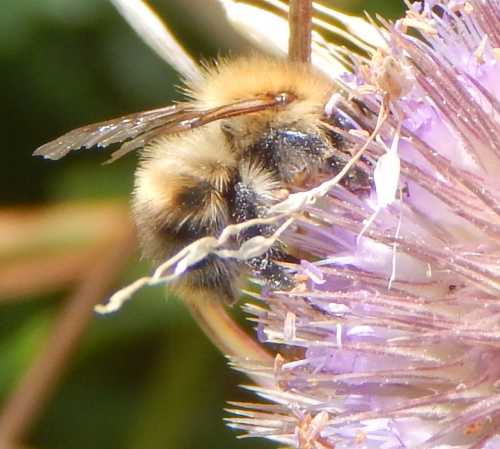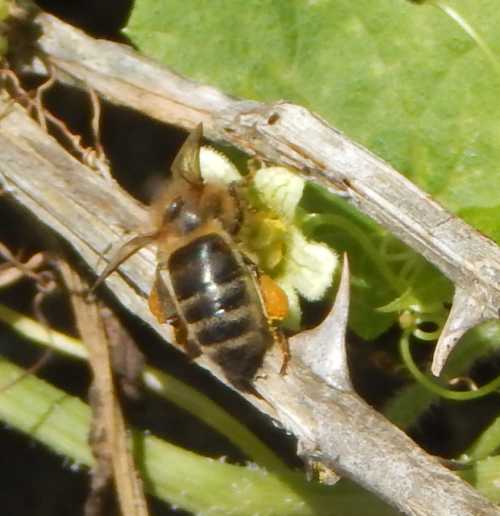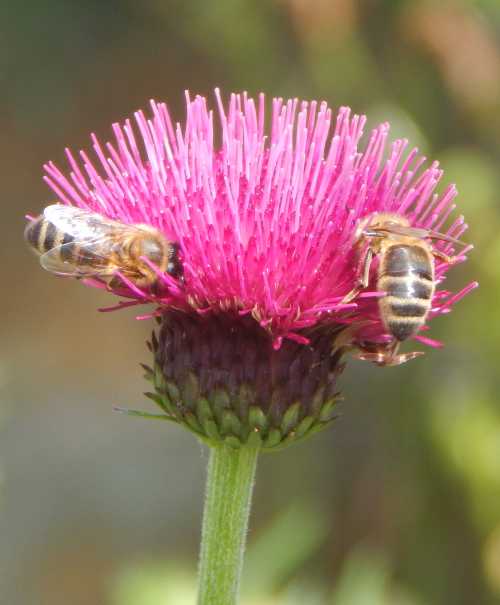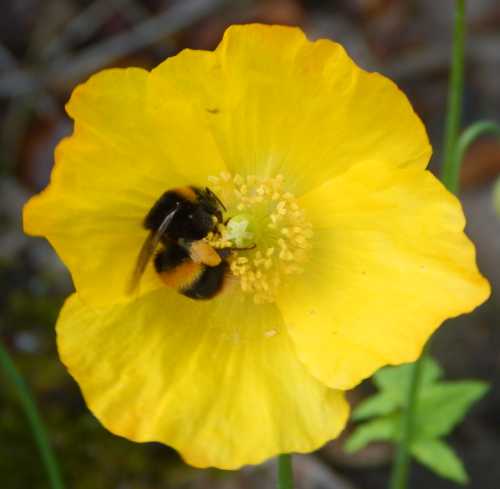Why Do Bees Have Hair? Why Are Bees Furry?
You will probably have noticed that bees have furry bodies, but why do bees have hair?
The short answer:
The furry bodies of bees provides an efficient means to collect pollen, which sticks to the individual hairs. Hair also aids with temperature regulation and helps the bee detect vibrations from the atmosphere. Hairs on the tongue aid feeding.
Why do bees have hair?
Hair typically collects on the bodies, head and legs of bees, but did you know that bee tongues also have hairs?
Two bee species are also known to have hairy eyes: sharp-tail bees and honey bees.
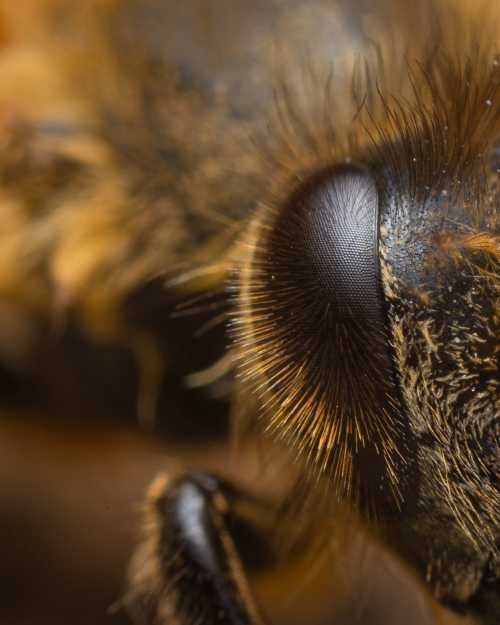 The eye of the honey bee showing a fine covering of hairs
The eye of the honey bee showing a fine covering of hairsPhotograph, with thanks to Isaias Sanchez
So here's why bees have hair.
1. An Efficient Way To Collect And Carry Pollen
Bees need pollen to feed their young. As bees visit flowers, pollen grains stick to the many hairs on their bodies.
Look very closely at the photograph below, and you'll see a fine, pale dusting of pollen on the bumble bee's furry coat.
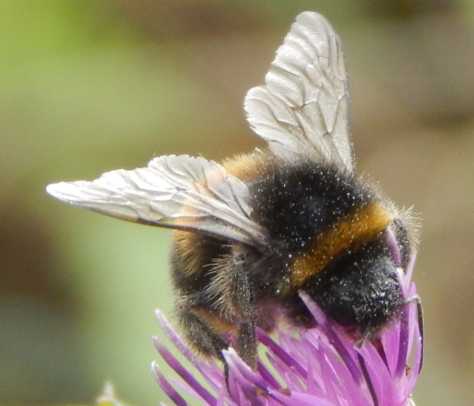 Above: This bumble bee foraging on knapweed has a fine dusting of pale pollen on its black furry coat.
Above: This bumble bee foraging on knapweed has a fine dusting of pale pollen on its black furry coat.(Note that some flowers don't release their pollen so easily, but different bee species have developed a method of shaking and vibrating the anthers until the pollen is released - see buzz pollination).
2. Thermo-regulation
In cool weather, the fine hairs on a bee's body trap the heat, helping the bee to keep warm, and protecting it from exposure to the cold. When honey bees huddle together in a nest or hive over winter, this effect is magnified.
You can read more about this on the page Where Do Bees Go In Winter?
3. Feeding
The tongues of bees feature hairs that aid in the lapping up of nectar when foraging on flowers. In some writings, it is also suggested that the hairs on the tongues of some bees may help the bee to form a tube or straw shape for sucking up nectar1.
4. Picking Up Vibrations
The fine hairs on the bodies of bees help them to pick up vibrations from the atmosphere, and indeed actual touch. This can help them with alarm responses.
Specially Adapted Hairs To Perform Specific Tasks
Some bee species have specially adapted hairs for performing particular tasks. Here are a few examples:
Oil Collecting Hairs For Oil Collecting Bees
Oil collecting bees, such as Macropis, actually use specially adapted hairs on their front legs to collect oils from flowers. Together, the hairs form a spatula shape, specially for the purpose.
Pollen Baskets On The Legs
Corbiculate bees (e.g. bumble bees and honey bees) collect pollen on their hairy bodies, then transfer it to specially adapted hairs on their back legs called 'corbiculae' - (otherwise known as 'pollen baskets'). In this way, the bees can easily transport the pollen back to the nest following foraging trips.
The pollen baskets are tufts of stiff, curled hairs that are well equipped to carry a mixture of pollen moistened with nectar. Read more about How Bees Collect Pollen.
Below is a bumble bee with pollen baskets full of pollen.
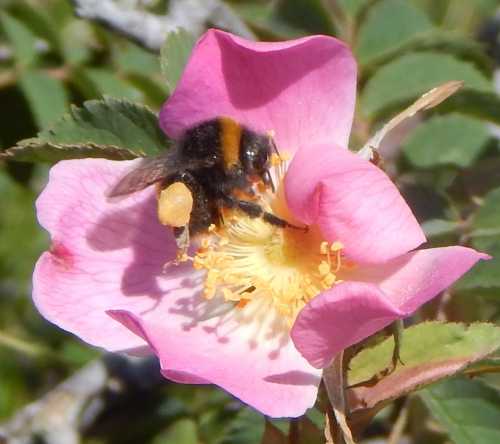 Above: Bumble bee foraging on rose - note the pollen baskets on the hind legs, laden with pollen.
Above: Bumble bee foraging on rose - note the pollen baskets on the hind legs, laden with pollen.Scopa On the Legs
Scopa can also appear on the legs as seen in the picture below of a female Pantaloon bee, Dasypoda hirtipes.
These hairs are ideal for collecting dry pollen.
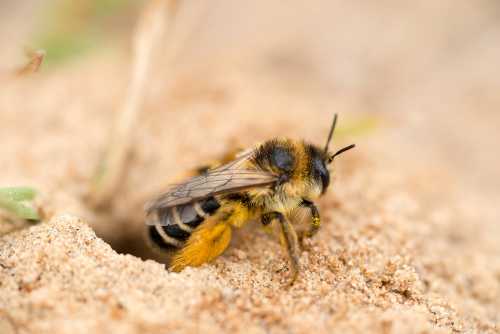
Scopa Under The Abdomen
Some bees carry pollen on specially adapted hairs on the abdomen, called scopa. Below you can see a leafcutter bee approaching Campanula flowers with scopa full of pale, creamy pollen.
Read more, and watch some videos about amazing leafcutter bees.
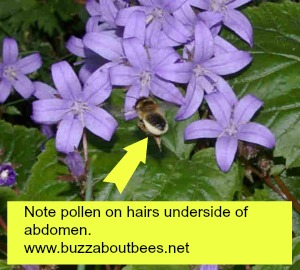 Above: Leafcutter bee showing scopa.
Above: Leafcutter bee showing scopa.
References:
(1) The Tongue Of The Honey Bee page 274 b Prof. A. J. Cook; found by copying and pasting the link below into your browser: https://www.journals.uchicago.edu/doi/pdfplus/10.1086/272534
If you found this page helpful or interesting, I'd really be grateful if you would share it with others - if not this page, perhaps another, such as Gardening For Bees.
Thank you so much :) .
